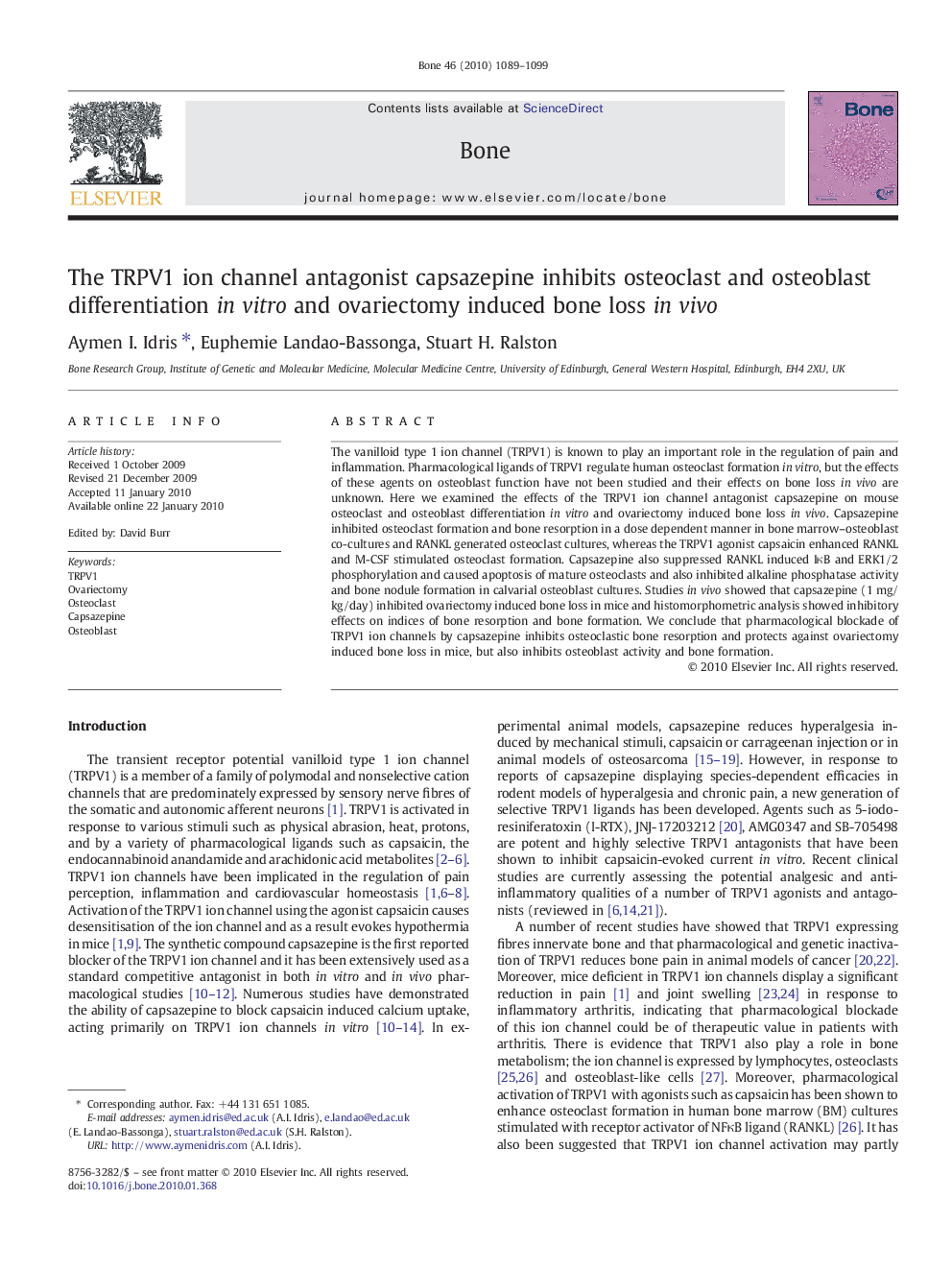| Article ID | Journal | Published Year | Pages | File Type |
|---|---|---|---|---|
| 2781107 | Bone | 2010 | 11 Pages |
Abstract
The vanilloid type 1 ion channel (TRPV1) is known to play an important role in the regulation of pain and inflammation. Pharmacological ligands of TRPV1 regulate human osteoclast formation in vitro, but the effects of these agents on osteoblast function have not been studied and their effects on bone loss in vivo are unknown. Here we examined the effects of the TRPV1 ion channel antagonist capsazepine on mouse osteoclast and osteoblast differentiation in vitro and ovariectomy induced bone loss in vivo. Capsazepine inhibited osteoclast formation and bone resorption in a dose dependent manner in bone marrow-osteoblast co-cultures and RANKL generated osteoclast cultures, whereas the TRPV1 agonist capsaicin enhanced RANKL and M-CSF stimulated osteoclast formation. Capsazepine also suppressed RANKL induced IκB and ERK1/2 phosphorylation and caused apoptosis of mature osteoclasts and also inhibited alkaline phosphatase activity and bone nodule formation in calvarial osteoblast cultures. Studies in vivo showed that capsazepine (1 mg/kg/day) inhibited ovariectomy induced bone loss in mice and histomorphometric analysis showed inhibitory effects on indices of bone resorption and bone formation. We conclude that pharmacological blockade of TRPV1 ion channels by capsazepine inhibits osteoclastic bone resorption and protects against ovariectomy induced bone loss in mice, but also inhibits osteoblast activity and bone formation.
Related Topics
Life Sciences
Biochemistry, Genetics and Molecular Biology
Developmental Biology
Authors
Aymen I. Idris, Euphemie Landao-Bassonga, Stuart H. Ralston,
